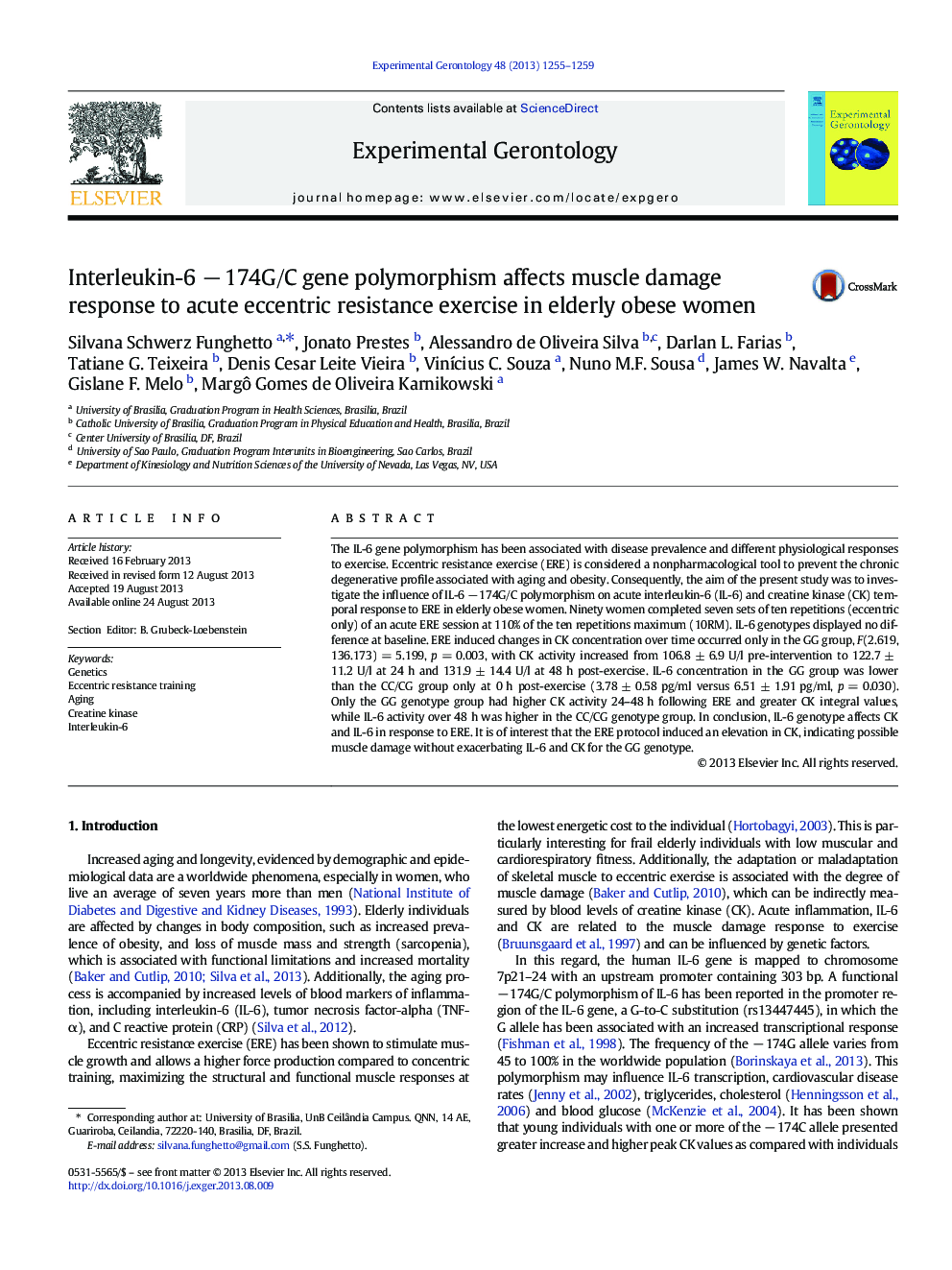| Article ID | Journal | Published Year | Pages | File Type |
|---|---|---|---|---|
| 10736817 | Experimental Gerontology | 2013 | 5 Pages |
Abstract
The IL-6 gene polymorphism has been associated with disease prevalence and different physiological responses to exercise. Eccentric resistance exercise (ERE) is considered a nonpharmacological tool to prevent the chronic degenerative profile associated with aging and obesity. Consequently, the aim of the present study was to investigate the influence of IL-6 â 174G/C polymorphism on acute interleukin-6 (IL-6) and creatine kinase (CK) temporal response to ERE in elderly obese women. Ninety women completed seven sets of ten repetitions (eccentric only) of an acute ERE session at 110% of the ten repetitions maximum (10RM). IL-6 genotypes displayed no difference at baseline. ERE induced changes in CK concentration over time occurred only in the GG group, F(2.619, 136.173) = 5.199, p = 0.003, with CK activity increased from 106.8 ± 6.9 U/l pre-intervention to 122.7 ± 11.2 U/l at 24 h and 131.9 ± 14.4 U/l at 48 h post-exercise. IL-6 concentration in the GG group was lower than the CC/CG group only at 0 h post-exercise (3.78 ± 0.58 pg/ml versus 6.51 ± 1.91 pg/ml, p = 0.030). Only the GG genotype group had higher CK activity 24-48 h following ERE and greater CK integral values, while IL-6 activity over 48 h was higher in the CC/CG genotype group. In conclusion, IL-6 genotype affects CK and IL-6 in response to ERE. It is of interest that the ERE protocol induced an elevation in CK, indicating possible muscle damage without exacerbating IL-6 and CK for the GG genotype.
Related Topics
Life Sciences
Biochemistry, Genetics and Molecular Biology
Ageing
Authors
Silvana Schwerz Funghetto, Jonato Prestes, Alessandro de Oliveira Silva, Darlan L. Farias, Tatiane G. Teixeira, Denis Cesar Leite Vieira, VinÃcius C. Souza, Nuno M.F. Sousa, James W. Navalta, Gislane F. Melo, Margô Gomes de Oliveira Karnikowski,
